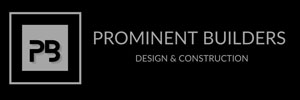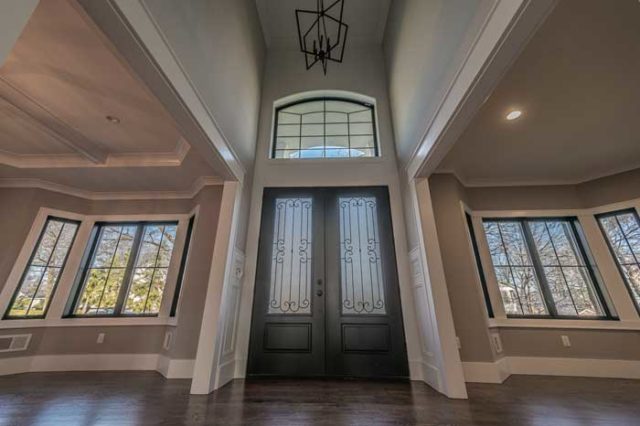This month’s blog post is the final in a series of monthly posts about the new home construction process. Over the last five months, we have shared each of the critical stages of the construction process and what to expect.
Our series is below and follows the construction process from beginning to end:
- April: Floor Plan Choices When Building A Custom Home
- May: New Home Foundations – The Important Things to Know
- June: The Framing Stage of New Home Construction
- August: The New Home Construction Process – Detailed Interior and Exterior Work
This final installment focuses on the importance of the homeowner pre-closing inspection. During this stage, a final walk through is conducted to identify any small or large issues that need to be addressed before the loan closing. Issues can range from something that is inoperable, to damage that may have been caused and overlooked by contractors. We share best practices for conducting the pre-closing inspection to ensure that you are fully satisfied with the work and your future new home.
What to Bring
- If you plan to conduct the walk-through without the builder, make sure to have a trusted friend or someone there like your real estate agent with you who can help. Everyone sees things differently, so it will be helpful to have another set of eyes as you look around the home.
- You should also plan to have a camera, or your mobile device, for taking pictures. It is important to keep a documented record of what you find, so you can follow-up on issues to ensure they are addressed by the builder.
- Pad of paper and pen.
- Phone charger or inexpensive electrical outlet tester (you can find these at any hardware store for under $20).
- Every builder may handle this process differently, but in general you will be given a roll of blue tape and be asked to put it on items that require attention. Have enough tape for you and any other helpers.
- Flashlight and screwdriver kit.
- Try to schedule your walkthrough in the early afternoon, so you can have maximum natural light on the interior and exterior of the home
Walkthrough Checklist
The list below is not comprehensive for all the custom features that you may have added to your home but does encompass many items to inspect during your final walkthrough.
Electrical
- Test all installed lighting, dimmer switches, and ceiling fans (if applicable)
- Using the phone charger or tester, check that all wall outlets are working
- Test GFCI outlets and reset
- Check the circuit breaker box for proper labeling of all household circuits and look for any tripped breakers
- Test HVAC system – air and heating; make sure cool air or heat is coming out of all vents within the home
- Test doorbell and exterior lights
- Test garage door opener (if applicable)
- Test ceiling vents in bathrooms
Plumbing:
- Run all faucets and shower/tub faucets, test hot and cold
- Check for any leaks underneath the sinks
- Flush all toilets and wait for the tank to refill, check for any leaks behind toilet or in wall connection
- Test drains in all sinks and sealing around faucet
- Run the garbage disposal (if applicable)
Appliances:
- Check appliances, including oven(s), stove, refrigerator, dishwasher, microwave, and washer/dryer (if applicable)
- Turn on oven at different temperatures, check lights
- Test stove vents and light
Windows/Doors:
- Open all windows to ensure smooth operation, check for screens (if applicable); check window locks
- Test all doors and door locks; make sure all doors are properly hinged and close
Walls and Ceilings:
- Check for any nail pops on the walls and ceilings
- Check for full coverage of paint on walls
- Inspect millwork (baseboard) for paint and sealing
- Look for general damage on walls, ceilings, and baseboards
Flooring:
- Inspect flooring for damage to tile, hardwood, or laminate
- Inspect grout on tile
- Ensure that carpeting is secured in all corners and ends and there are no raised areas or bumps
Vanities, Cabinets, and Countertops:
- Depending on when your vanities or cabinets were installed, they may be subjected to damage from other contractors
- Look for scratches, dents or other damage on all vanities and cabinets.
- Test door hinges and alignment.
- Test any soft-close drawers (if applicable)
- Check countertops for chips or nicks. Run your finger along all the countertop edges
- Check for sealing along seams of countertops and wall/backsplash
Exterior of Home:
- Walk perimeter of home, checking landscaping
- Test exterior hose or water sources
- Check exterior walls for damage or any painting issues
As stated above, this list is not comprehensive. If you feel the need for a more thorough inspection, speak with your builder about your interest in hiring an independent inspection service. Independent inspectors can check areas of the home that you may not have access to or not familiar with what to look for during the inspection. For example, they may access your roof and attic to check for waterproofing, insulation, and ductwork.
In the end, make sure to conduct a thorough inspection so that you are satisfied and share everything with your builder. Ask about completion dates and priority of what will be done prior to closing, and items that you are willing to wait for post-closing.
If you have any concerns about your final walkthrough, make sure to discuss them with your Prominent Builders and Design consultant. If you are interested in starting a new home construction project, please give us a call.

